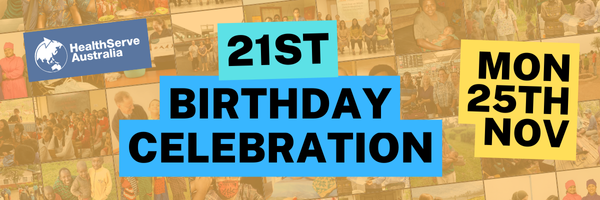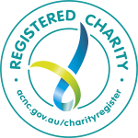
This blog post is part of HealthServe’s 21st Birthday Celebration series. All month we’ll be celebrating HealthServe’s past, present and future, culminating in a live online Celebration Event on Monday 25th November. We’d love to see you there! Details and registration here.
Over the last 21 years, HealthServe has had - and continues to have - an incredible impact around the globe.
This past year alone, we’ve been able to provide over $200,000 in funds for health programs around the world, impacting over 3,000 people through the amazing work of 18 program partners in 16 countries.
We spoke to three of our current and past program partners to talk about their success stories and learnings, and how - thanks to your support - HealthServe has been able to contribute to bringing positive health outcomes to their communities.
Read on for a chat with Dr Gilbert A. Mateeka from the Muko Health Centre in Uganda, Medina Lamunu from the Orison Medical Centre in South Sudan, and Dr J.P Poddar from the Indian Institute of Training & Development.
What are some success stories from your program?
Dr Gilbert A. Mateeka, Muko Health Centre: The story of Muko Community with the support of HealthServe Australia is a beautiful success story. Everyone that has been part of it should be proud of what God has achieved through them. There were moments during this journey when all hope was gone, but then a way would be made where it seems not…I think there was that one person that God still wanted to reach with his love despite the weaknesses of our system back here. Looking at Muko Health Centre III today makes every effort worth it.
Medina Lamunu, Orison Medical Centre: Drilling of the borehole on the land/site for Orison Medical Centre was a true success in enabling the process of making mud bricks for the building to begin. Thus, the construction of Orison Medical Centre kicked off because of water availability from boreholes.
Muko: Before HSA support came in and sometime thereafter, the facility was operating at a level referred to as ‘Level Health Centre II’. This is the lowest level of care in Uganda and can only attend to patients with minor illness and who are able to walk in and out. Subsequent to improved quality and scope of services offered, the facility was successfully upgraded by the Government from Level II to Level III which provides a wider scope of services including patients with conditions that require them to be admitted to stay for a few days, providing services to pregnant mothers, and conducting their child birth.
The facility has acquired an ultrasound scan and has been able to provide training to one of the staff. This has brought scanning services closer to the mothers who have been travelling long distances to receive the service, the community has been happy about it like no other achievement.
The facility has greatly improved in the national selected key indicators of service delivery and currently ranks among the top 10 among 38 other facilities in the same District.

What are some notable health outcomes from your project?
Dr Gilbert A. Mateeka, Muko Health Centre: A vast and comprehensive immunisation program has seen the target of every child completing the immunisation schedule by their first birthday being achieved. This has seen zero immunisable disease outbreaks in our catchment and general health. Community Health Insurance has provided affordable services to the community this in turn has led to the improvement in health seeking behaviour and good health. The ultrasound scan was a cornerstone achievement as it is mandatory for mothers to have at least one USS before they deliver, mothers can access the service easily which has improved early diagnosis of risky pregnancies, timely referral and improved prognosis of maternal and neonatal conditions.
Dr J.P Poddar, Indian Institute of Training & Development: The most notable health outcomes or improvements in the communities in our Project area include:
- Community members have acquired a habit of proper hand washing after using the toilet. Now all the houses where we conducted the Awareness Program in our project area have soap in their toilets.
- All the women in the Project area have stopped taking bath in the pond during the menstruation period.
- 95% of women have started using Sanitary Napkins instead of using clothes.
- Adolescent girls have started intake of Iron Folic Acid tablets from time to time to prevent anaemia. If they have any physical or mental problem, they go to the women’s counsellor of the Anwesha Clinic run by the Government Health Department to seek help.
- Adolescent girls and boys now understand the disadvantages and hazards of early marriage. If an adolescent group finds any case of early marriage in their village , they try to make that family understand. If they are unsuccessful in preventing early marriage, they call the Childline Helpdesk number and by the intervention of the Government & local people, marriage is prevented.
What are some challenges your program had to overcome?
Orison: Transportation. All roads leading to the project site became impassable during rainy season, delaying transportation of building materials. We overcame the problem by transporting building materials in bulk when it’s not raining. Another problem we faced was financial: the US dollar exchange rate fluctuation combined with the South Sudanese Pounds (SSP) inflation means the value of SSP decreases, which affects our budget greatly. HealthServe has helped us by always sending the funds for the project in US dollars, making the cost of materials cheaper for us.
Muko: The common causes of maternal and death during and after delivery are the delays. The first delay is the delay for the mother to make a decision to seek care. This is often due to fear of the cost of service and the traditional beliefs. The second delay is the delay to reach the health facility after the decision to go there has been made, and the delay to get appropriate health intervention at the health facility.
With the support by HSA, all pregnant mothers are provided antenatal care, delivery and postnatal care free at no cost. This is because they are all enrolled in the community health insurance on their first visit. This intervention directly and indirectly addresses all the other delays.
Under HSA the facility has provided affordable basic Community Health Insurance (CHI), this has promoted health seeking behaviour among the community leading to early diagnosis and treatment in turn reducing mortality and morbidity that are medical related, rarely do we have facility deaths unless they are trauma related.
Before the support of HealthServe, the facility operated in an old building which was previously a church. With the support from HealthServe new structures were constructed and these are:Out Patient Block, standard maternity Block, Staff houses, Canteen and sanitary facilities. This has also standardised service delivery.
Can you share some stories of impact from the community?
Orison: A chief who donated the land for the project passed away in 2022. He used to speak highly of reducing maternal and infant mortality in the area. He once said to me during a community meeting when I visited Obbo in 2020, “Daughter of the land (Medina), my people have suffered and seen so many deaths of women giving birth and newborn dying in this community. Please, build a Medical Centre here on this land given for this project to prevent or reduce such deaths in the future. Even if I will be dead before the medical Centre is built, make sure you remember my words.” His name was Jildo Odoch, RIP. Chief Jildo expressed himself in pain of witnessing such death as a leader and in love for his people, future generations to not feel the same pain he endures. We would like to fulfil his wish for his community to have access to the medical Centre which is a blessing.
Muko: There are a lot of success stories in the community but let’s focus on the most recent one. Early August, one mother who was mentally unwell, carrying a term pregnancy, was abandoned by the family members. She barely had anything on her – not even a cloth for receiving the baby – was brought in by an unknown cyclist close to midnight. As soon as he got her to us, he left immediately and abandoned her without notifying anyone. On examination, she was mid-dilatation and we couldn’t manage her at our facility, as it was beyond our level of care. We decided to refer her to Rugarama Hospital. We were able to transport her with our facility ambulance and she delivered a healthy baby! All requirements were provided to her and was transported back to her home all at no cost due to your support through community health insurance. In the process, community leaders were consulted. The mother, the community and the leaders were very grateful, The mother and the baby are healthy in the community and follow up has already been arranged. All this is possible because of your support.
How has HealthServe helped your program?
IITD: The support from HSA has been instrumental in achieving the milestones of our health programs. For example, Screening of Cervical Cancer Camp was held with the married women between 30 and 60 years old. Ten women were suspected of having cancer. They were taken to Chittaranjan National Cancer Institute in Kolkata for treatment. Nine out of the ten women were fully cured and saved from health and economic disaster. We now have 20 women with positive blood groups who are always ready to donate blood in the local hospital Blood Bank when needed.
Muko: As illustrated above HSA contributes a big share of the facility budget while allowing the facility to be innovative in order to ensure sustainability of the gains. The approach by HSA facilitates community ownership and capacity building which is critical for sustainability. As a result of ease of access to quality health care at the facility, there is improved quality of life due to improved health seeking behaviour since the barrier of cost of service is addressed by the community insurance and community outreach by the health facility. These have resulted in evident community transformation.
Examples of where positive impact has been made thanks to HealthServe:
- Zero maternal mortality rate and 2/1000 live births perinatal mortality rate for the facility.
- Negligible staff attrition due to improved welfare and experience some staff have served at the facility for as long as 5 years. Not common in other similar facilities.
- Affordable health care due to Community Health Insurance.
- The facility Catchment area has been assessed by the Ministry of Health as having good coverage of immunisation and other maternal and child health services.
- Generally, a healthy community due to accessibility, community health insurance.
What’s next for your project?
Muko: There is a need to provide Comprehensive Emergency Obstetric and Neonatal services, as such it is our goal to construct a surgical operation theatre, equip it and recruit a Medical Officer (Doctor) in order to offer these services. This would reduce the current burden of referral of over 10 pregnant women per month to over 48 kms away.
That aside and even before the need for the above, the quality of the current service is sub optimal and as such we are working on the following:
- Equip the Laboratory to provide comprehensive hospital tests for general care and acquire better diagnostic capacity including radiography.
- To improve screening capacity for non-communicable diseases and functionalize chronic care services.
- Provide for more in in patient capacity with wards like paediatric, medical and surgical wards.
IITD: We would like to work on Malaria & Dengue Prevention along with Tuberculosis Prevention & Control. We also hope to continue Cervical Cancer Awareness, Detection & Prevention Camp; as well as promote Health & Hygiene among women & adolescents, and work on Prevention of Malnutrition Problems.
Orison: The goal for this project is to complete the construction, equip and open Orison Medical Centre to serve the community. We envision providing quality healthcare to the community with the help of HealthServe Australia financially and manpower.
This blog post is part of HealthServe’s 21st Birthday Celebration series. All month we’ll be celebrating HealthServe’s past, present and future, culminating in a live online Celebration Event on Monday 25th November. We’d love to see you there! Details and registration here.





